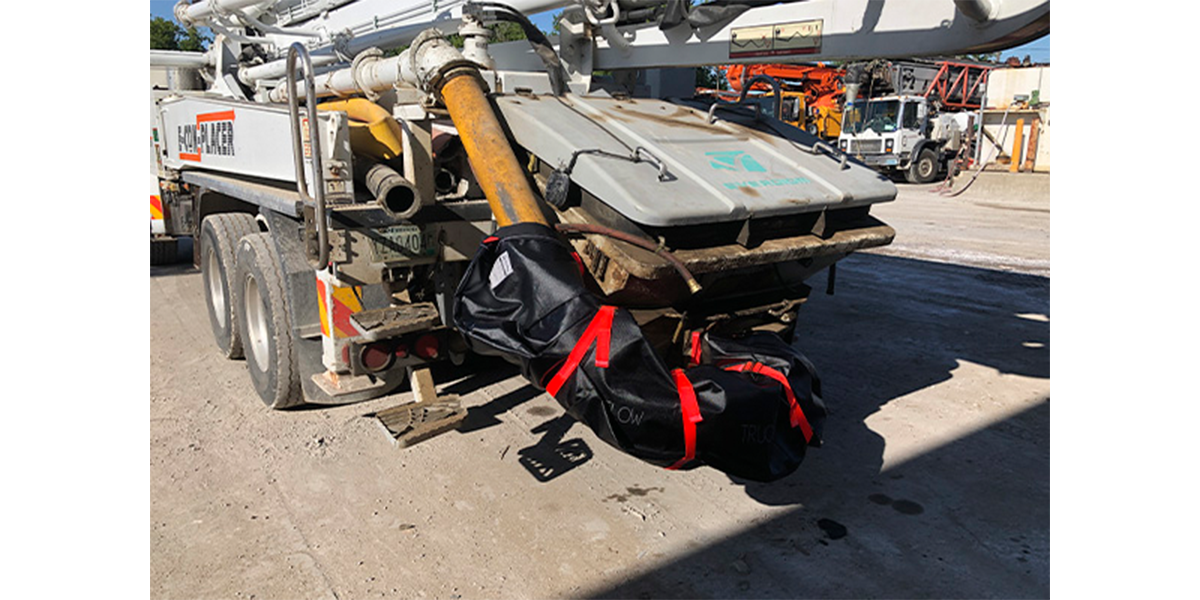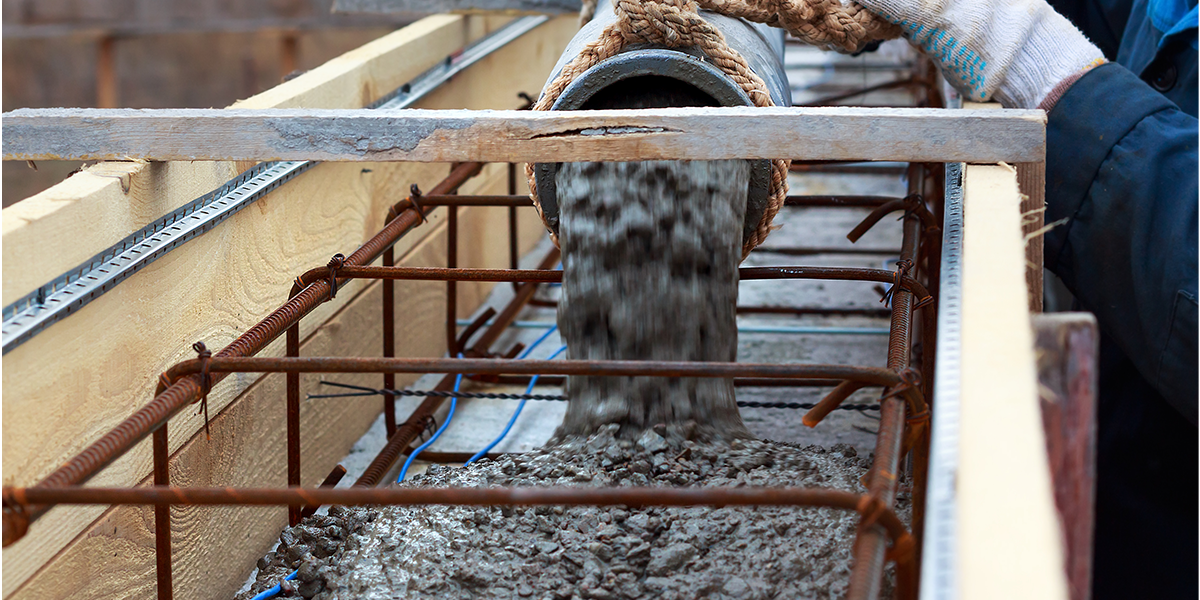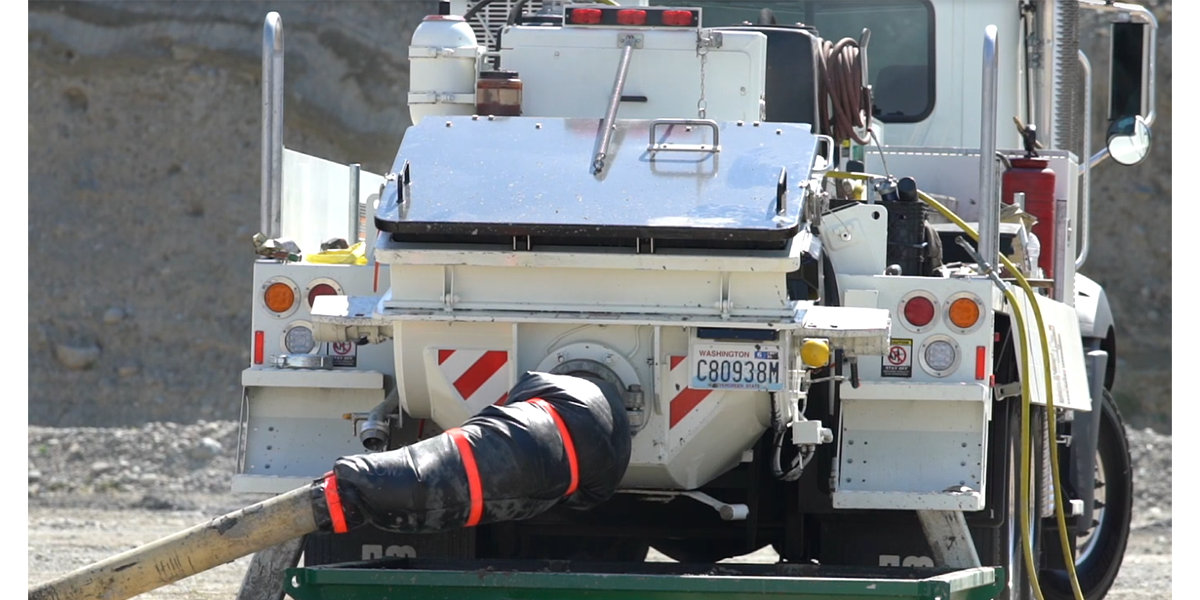
Concrete pumping has revolutionized the construction industry, allowing for efficient and accurate placement of concrete in nearly any project. While the process is designed for ease and effectiveness, understanding concrete pump safety is essential for safety and avoiding downtime.
In this guide, we’ll discuss three key items:
- The Basics of the Concrete Pumping Process
- The Risks Associated with Concrete Pumps
- The Solution: Python Pump Covers
Understanding the Concrete Pumping Process
Before diving into pump safety, it’s important to understand the concrete pumping process.
Concrete is first mixed in a truck, then dispensed into a hopper that continuously churns to prevent solidification. Once you’re ready to use the concrete, one piston moves the liquid concrete from the hopper into another piston pushing the concrete out of the discharge pipe. From there, the pump is able to transfer an accurate amount of concrete to its desired location.
Sounds easy, right?
While the process is fairly simple, the risks associated with concrete pumps make it much more involved.
The Risks of Working with Concrete Pumps
Like any construction equipment, concrete pumps come with risks. There are five risks typically associated with concrete pumps:
1. Pipeline Failure
When operating, the hopper and pump are under high pressure. Any weakened pipe is at extreme risk of failing during peak pump pressure.
If pipeline failure occurs, workers could be struck with rock projectiles, hygroscopic concrete slurry, or other debris - resulting in serious injury. Additionally, wet concrete would be spread around the ground causing slips, falls, and hazardous conditions.

2. Equipment & Employee Downtime
It’s no surprise concrete pumps should be regularly maintained for proper performance. However, it’s important to remember: while pump maintenance reduces the risks of major breaks, it’s not an absolute guarantee.
In the unfortunate event of pump failure, not only are your employees potentially in danger, they may be temporarily out of work while it’s being fixed. This interruption not only affects productivity, but also has consequences on your reputation, time management, and profit.
3. Pump Operator Mistakes
Let’s face it, we’ve all done tasks in the workplace we didn’t fully understand. However, if a pump operator isn’t highly trained, it can lead to mistakes that make or break your concrete pump.
Skilled operators understand how much hose to use during the job as well as the perfect concrete mix. If someone isn’t fully trained, any error could create tears, kinks, or ruptures mid-operation.
Additionally, trained operators are able to notice abnormal changes. If the concrete is being pumped too rapidly, the pressure can spike and potentially result in a pump failure. Skilled operators should know to reverse the pump a few times before forwarding it to reduce the chance of pump failure or blockages.

4. Pump Blockages
Blockages can be a result of a poor mixture. If the mixture doesn’t capture enough water, blockages are nearly guaranteed to occur.
Pump blockages can have the same impact as a weakened pipe – the blockage can cause a build-up in pressure, resulting in a release such as concrete slurry or debris ejecting from the pump and injuring workers around.
The Solution: Python Pump Covers
Python Pump Covers are vigorously tested in simulated environments to ensure maximum safety and performance. In these simulations, we factor in pressure, volume, environmental conditions, site-specific hazards, and ergonomic considerations to prepare for any scenario.
If your piping fails, the cover expands up to 30% to absorb kinetic energy. As a result, the extreme pressure will be contained until you’re in a safe location.
Python Pump Covers are flexible to fit on pumps of all shapes and sizes and are easy to install and remove. These covers are designed be an all-in-one solution for pump protection, with features including:
- Preventing personal injury & property damage
- Reducing the energy and pressure of ruptured pipes
- Containing slurry spray
- Covering couplers, clamps, and leaky seals
Pump failure is inevitable. While maintenance can’t prevent everything, Python Pump Covers can protect against any unexpected disaster, anytime.
